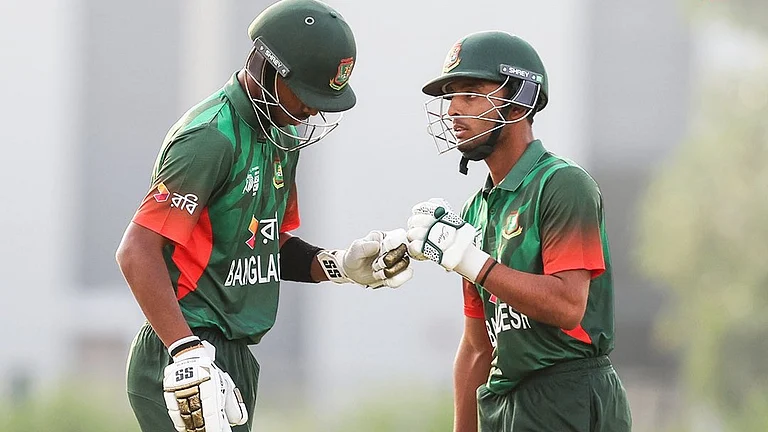- India must put the great majority of nuclear reactors into the civilian programme. Otherwise, Mulford said, the United States Congress was going to think that the Indians "must have some different agenda".
- America, Mulford said, has to be given to understand that India’s "basic (nuclear) industry is moving strongly into the civilian side. Otherwise it does not match the gameplan".
- India hasn’t delivered a credible plan for separating its civilian and military reactors. Mulford defined credible as that which is sufficiently believable to the members of Congress. Only then would they alter the existing law in a way acceptable to the countries in the Nuclear Suppliers Group (NSG).
- For the plan to be credible, New Delhi must elaborate on it.
What is India’s bottomline?
New Delhi’s argument is that any separation plan should not affect India’s strategic programme adversely.
What is the substance of India’s arguments?
New Delhi has told the Americans that India’s nuclear programme is modest, currently generating a total of 3310 megawatts of power. India doesn’t have a dedicated military programme, embedded, as it is, in the civil nuclear programme. Moreover, the reactors are small; most generate 220 MWe of power each. (About five of the Indian reactors make up for one American reactor.) Since these reactors perform dual functions, New Delhi can’t unplug these from the power grid.
What are India and the US currently talking about?
The talks are confined to reactors currently in operation, as also those which will begin functioning by 2009. Some discussions are also over the research reactors, which have provided most of the fissile material, or nuclear warheads, for India’s military programme.
Can India meet the American prescription of placing the "great majority of reactors" on the civilian list?
No, argue Indian scientists, claiming it would cripple the strategic weapons as well as the fast breeder reactor (FBR) programmes. The FBR runs on plutonium, which is funnelled out mostly from India’s Pressured Heavy Water Reactors (PHWRS). There are 13 PHWRS in operation.
What exactly is the FBR programme?
It is part of Homi J. Bhabha’s plan for India’s future energy needs that sought to bridge the gap between the shortage of natural uranium that India faces (Indian uranium, being low grade, is about seven times costlier than that in the international market) and the vast thorium reserves it has. His was a three-stage plan: in the first stage, reactors were to produce a lot of plutonium, a fissile material with tremendous energy potential. Plutonium comes out as spent fuel from the PHWRS. In stage 2, the plutonium thus extracted was to be placed in the core of a fast breeder reactor with the precious uranium. Operating the reactor with a thorium blanket would convert some of the thorium into U233. The third stage entailed using the U233 and thorium together in another reactor. In course of time, the Bhabha plan envisaged a number of FBRs.
What are the advantages of the FBR programme?
When uranium burns, only 1.5 per cent of the material is used; 98.5 per cent is waste. By recycling this 98.5 per cent of uranium, it is possible to multiply the energy extracted by roughly 60-65 times, beneficial considering our uranium reserves are meagre. A total of 350,000 MWe can thus be generated for several decades. It is a model for self-reliance but it is a slow process. India is now at the beginning of stage 2. The first Prototype Fast Breeder Reactor (500 MWe) is now under construction in Kalpakkam and will be ready for operation in about six years from now.
Is the FBR a bone of contention between India and the US?
The US wants the programme put under safeguards. India says since it is a test programme still in infancy, it wouldn’t be possible to do so.
What about the research reactors?
The US would like the CIRUS (a 40 MWe reactor imported from Canada) and Dhruva (a 100 MWe BARC reactor) to be put on the civilian list. These two reactors have produced most of the weapons-grade uranium. No wonder, scientists argue, it is not advisable to place them on the civil list. The American argument is that any reactor that produces fissile material should come under safeguards. Washington is also of the view that CIRUS is an instance of violation of guarantees furnished by India when it was used for military purposes. Indians argue that since the West stopped supplying fuel, which was also a guarantee, India refurbished the reactor through indigenous efforts.
How many reactors will India place on the civil list?
There are no numbers at this stage. Indications are that India has suggested that it would be willing to put under safeguards those reactors which together produce half of its total nuclear power output. The current capacity from 15 functioning reactors is 3,310 MWe. Of this, four are already under safeguards. These have been excluded. These four (TAPs 1&2, raps 1&2) produce 620 MWe. The rest consequently produce 2,690 MWe. As for the plants under construction, Koodankulam 1&2 are already under safeguards. The rest (TAPS 3, Kaiga 3&4, rapp 5&6) will produce 1420 MWe. What New Delhi is saying is that it is willing to place on the civilian list reactors together producing a total of 2,055 MWe (2,690 plus 1,420, divided by two). If New Delhi places one or both of the TAPs 3/4 (both of which will generate a combined 1080 MWe) on the list, then reactors under safeguards would be too small in numbers. Moreover, the underlying principle of drawing the list of reactors isn’t clear yet.
Can the deal be stitched up before American president George Bush comes visiting New Delhi?
Probably not. Americans have said that Indian offer won’t wash with Congress. Senior Indian officials also say the Americans have been "wishy-washy" in their approach to the deal. But the inability to stitch the deal before Bush’s arrival doesn’t mean the end of the Indo-US nuclear deal. It could still be worked upon in the months to come.
Has India done enough to mine its uranium reserves?
No. India hasn’t demonstrated requisite political will to overcome local opposition to mine uranium in the Northeast and Andhra Pradesh.

























